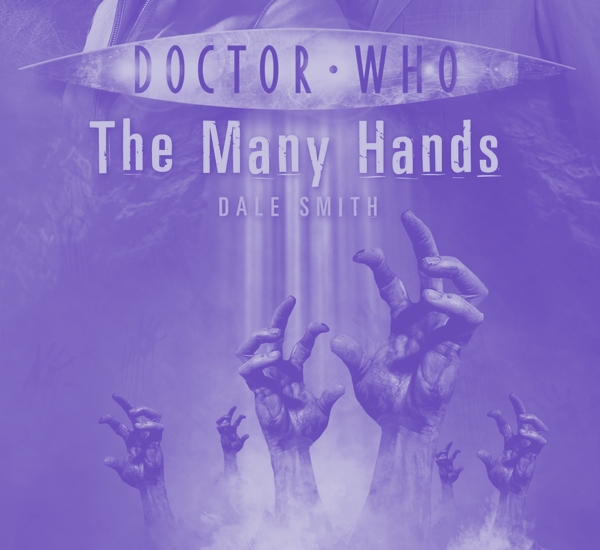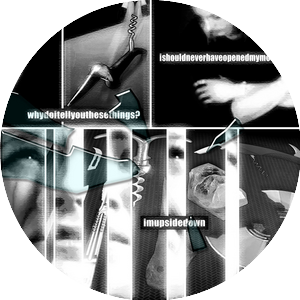Invitation
After my first Doctor Who novel Heritage was published, I tried hard to get a second. I spent a year writing proposals for Doctor Who stories, and none of them were good enough. The next year, two of them were – a co-write with Kelly Hale, and a WWII Fifth Doctor, Tegan, Nyssa and Adric version of the Aztecs. But they weren’t commissioned: just before Heritage had published, the Doctor Who books had halved the rate at which they were published and – because the BBC didn’t want to publish two consecutive stories featuring the same Doctor – that meant there was effectively only one slot a year for any story that didn’t feature the Eighth Doctor. Even those that did only had six slots, and both ranges already had a backlog of commissioned books to work through. I was told my pitches would wait until a suitable slot opened up, not rejected but not quite accepted either.
Part of the problem here was that we’d already commissioned well ahead – by halving the number of novels at a point where we were actually in good shape in terms of the commissioning meant that we now had an extra 6 months of material commissioned. Also, the 8th Doctor novels were just embarking on an ‘arc’ of linked stories which was already planned out – so there just wasn’t the opportunity to slot in anything that came in unsolicited as it wouldn’t have fit…
I realised that a significant hole had appeared in my writing CV, and that I could spend the next five years writing Doctor Who pitches that were good enough to publish without any of them actually making it into print. At the same time, my enthusiasm for Doctor Who was starting to dry up, and I decided to turn my writing ambition elsewhere. Shortly afterwards, the BBC stopped publishing their Doctor Who tie-in books, and so it seemed my decision to not write another had been made permanent.
Then the entire Doctor Who landscape changed.
I found myself in the strange position of not being a Doctor Who fan any more, but being very excited about the news of a new Russell T Davies series starring Christopher Eccleston. By the end of the first episode, I was a Doctor Who fan again. Eccleston regenerated into Tennant, and even at that moment I felt like I knew the new Doctor so well I wanted to write something for him.
Then, in July 2007, Justin Richards got in touch and asked if I was busy.
We hadn’t really kept in touch since Heritage was published, but I had contacted him relatively recently to interview him for my piece on the New Adventures in Time and Relative Dissertations, and we were Facebook friends. I’d also interviewed Gary Russell – the man who’d published my first professional fiction – for the same piece, and again Facebook was the limit of the vague relationship I still had with him. But Gary was working on the new series of Doctor Who, and Justin was still the range editor for Doctor Who books: when they sat down to decided which authors would be asked to write the tie-in novels for that series, for reasons known only to themselves, they both thought of me.
I had a list – not a formal list, just my own notes – of writers I’d worked with before who I felt would ‘get’ the new series and be able to write the sort of Doctor Who we now needed that matched in with the series in terms of tone and approach. And you were on that list.
Publishing sets of three books at a time means balancing not just the stories and settings (and time periods) to get a good but complementary mix, but you have to do the same with the authors too – so the tone and style of the writing is also complementary but not too similar. So the decision to ask you to contribute would have been taken knowing who else I wanted to write for that set of three novels, and what their strengths were as writers.
I very quickly told Justin I was not busy.
Inspiration
The deadline for finishing the book was tight, dictated by the need to fit to the series’ production schedule and be available in the shops at the right time. Justin told me that the commission was mine and he was happy to work with me until we found a story that was suitable.
I think that’s fairer on the authors – it isn’t a competition. I was once asked to pitch a story for something, and finally having heard nothing for ages I asked what was going on and they told me: ‘Oh, we went with one of the other pitches’. That’s fair enough but I’d been led to believe I was the only author in the frame and had assumed – maybe a bit arrogantly – that if they didn’t like what I pitched we’d work together to turn it into something that was suitable.
I actually think you get better results that way too, and a better working relationship between author and editor – which is especially important in the sort of tie-in fiction where there are huge constraints on the author, who does very much have to write to a brief and adhere to stringent guidelines…
And speaking of those guidelines:
So far as I recall, what I wanted from your novel was something set in the past, but somewhere broadly recognisable, and with lots of atmosphere rather than driven by action or invading hordes of monsters. From Heritage – which is in a way a historical story set in the future – I knew you could do that admirably.
I came up with several pitches that I threw at Justin in one go after a few days: most of them were based on places I wanted to set a story, with a time period and an antagonist quickly created (alien foxes versus Roman legionaries in Anglesey; zombies disturbed by the draining of the Nor Loch in Edinburgh) but there were a couple that I based on actual events I wanted to write about (the Doctor helps a Sioux Indian left in Salford by Wild Bill Hickock’s Travelling Circus; the Doctor and Arthur Conan-Doyle fight the invasion of the Piltdown Men).
In terms of how they translated into actual stories, none of them was any more formed than the other: I had my favourites, but they were all sent with a certain amount of faith that I would be able to make something I wanted to write about of whichever of those ideas Justin and Gary decided they liked the sound of.
It would depend on the others stories I was looking at as well as personal preference. And Gary [Russell] would advise on what was being planned for future TV episodes so we could avoid any potential clash there.
Getting the Story
Justin Richards looked over each of the pitches I sent him, and decided which he would send to Gary Russell for official approval. Some were rejected immediately – an upcoming Quick Read was going to feature Arthur Conan-Doyle, so my Piltdown Men story was out, for example. Justin whittled them all down to two pitches that were sent on to Gary for the final decision. The decision was that, so long as I didn’t make it too graphic, I should write the zombies in Edinburgh story.
The first thing I did was research.
Which meant I discovered I’d made a mistake: my pitch had dated the draining of the Nor Loch to 1840, whereas wider research soon made it clear it actually began in the 1760s and was completed by 1820. Researching these earlier periods in Edinburgh’s history led to the discovery of Alexander Monro, who had apparently been the Chair of Anatomy at Edinburgh University for 126 years. Research assured me that this was actually three generations of Alexander Monros, but the idea of an anatomist who discovered immortality was already planted.
Tying the story to Monro narrowed down the period of the story considerably: his first “son” was born in 1733, his father died in 1740 (which I wanted to be formative) and he himself died in 1767. With his “grandson” being born in 1773, I settled on 1749 as being the best year for the story: I could have two Monros interacting, and a third in reserve for an epilogue, and it would also allow for a cameo from Benjamin Franklin, who had been in Edinburgh in that year. One of the fan observations of the new series of Doctor Who was that stories set prior to living memory always had a recognisable historical celebrity in them, and I wasn’t going to argue with fanlore.
The other thing I had noticed about new Doctor Who was that it was very much an action adventure serial, and I was decided almost from the beginning that I was going to emulate that. I had my idea for the coach-top chase down the Royal Mile opening the book, and the story was bolted together from each interesting nugget of research I had found: Royal Mile, to Tolbooth, to Castle, to Nor Loch, to St Cuthbert’s Church, to St Mary’s Close and then when there was no more history to share the denouement could happen. I wanted it very much to feel like an episode of the TV series that happened to be written down – which was a new experience for me, but not particularly for Doctor Who books.
I had to move quickly, as I had to get a synopsis to Justin for approval by the end of July. Once I had everything written down, it was pretty much time to send it in.
Outside Help
The synopsis was accepted – on the understanding that the title was truncated from “The Many Hands of Alexander Monro” because it wouldn’t fit either with the other two books out at the same time nor on the spine of a book – at the beginning of August. I was going to have to deliver a final manuscript within two months, and so the only hope I had of writing something decent was to get a lot of opinions on it as quickly as I could.
The synopsis was sent to some writers I had become friendly with since Heritage had been published, but also to some other non-writers that I knew. I’ve seen differing views on this, but my personal feeling is that books are going to be read by a lot of people who don’t know how to write a good book: if a reader gives you honest feedback, then for me that is more important than whether they can then make a good suggestion about how to improve what they didn’t like. If someone – anyone – doesn’t like something about your story, then the first thing you do is decide if you agree with them. For me, the opinion of someone who reads books is just as valid as that of someone who writers them, and all that matters is that second part: do I agree with them?
The other thing that helped with the Old Town section of the book was the fact that writing it in August coincided with what was my parents’ semi-regular holiday at the Edinburgh Festival. Sleeping on their sofa, I took the opportunity to look first hand at some of the places I wanted to write about: a trip into The Real Mary King’s Close was particularly useful for geography and atmosphere, but it was also useful to visit St Cuthbert’s and stand on the site of the old Nor Loch.
Editorial
I sent The Many Hands in to Justin Richards, and was relieved when he didn’t send it straight back saying he’d made a terrible mistake. He suggested bumping up the suspense in the scene where Martha is trapped alone with many of the Many Hands, and introduced the idea of using a mobile phone as a torch with a short battery life. He also suggested taking out a reference to the sonic screwdriver distracting rampaging horses by increasing their sex drive, which was partly an in-joke to one of my beta readers that they didn’t pick up on.
That done, the book was accepted and quickly moved along to the next stage.
What Happened Next?
The book came out in April the next year, alongside others by Justin Richards and Mike Tucker. I was invited to do a signing with them at Forbidden Planet on Shaftesbury Avenue, where the majority of people were there to get their books signed by those two more famous writers. The only consolation for not having anyone to sign books for was that I also didn’t have anybody pitching stories at me, which Justin politely sat through. I also got asked a few questions by a journalist from The Scotsman, and I took it on myself to contact the Real St Mary’s Close exhibition to let them know they had featured in a new Doctor Who novel.
Shortly after, Steve Tribe got in touch and briefed me about the audio book of the story that was going to be recorded. Steve was abridging the book, so it very much went ahead without me. But I did mention that I was a massive fan of David Troughton, the reader they had chosen, and the director asked for my number so that they could ring if there were any problems and I could maybe speak to him directly. A question of pronunciation came up … and because I hadn’t checked my emails for 24 hours, I hadn’t given them my number, so that opportunity passed me by.
There was still a part of me that hoped The Many Hands would lead to more Doctor Who books, but I was more realistic about it this time. If I’d been asked, I would have said yes like a shot, but I made the conscious decision that I wasn’t going to let it pull me into spending any time trying to get other Who work.
Perhaps I might have got other offers, but the book didn’t make that big a splash. It received good reviews, but not the exceptional ones needed to guarantee me a second chance: one reviewer described the first-half of the book as the Doctor running all the way down the Royal Mile, and then running all the way back up again. It wasn’t until I read that review that I realised I agreed: in my haste to meet the deadline and have it feel like a high-octane, high speed episode of new Doctor Who, I’d failed to give the synopsis and the finished book the last layer of gloss I would have wanted it to have.
The Many Hands hasn’t led to any more work from Doctor Who Books.
It still might – you’re on the list. As you say – that’s only one reviewer. Your editor didn’t get that impression at all … but with only 6 novels a year – at most – in the ‘main’ range, there’s far more good authors who want to write Who books than books to be written.


